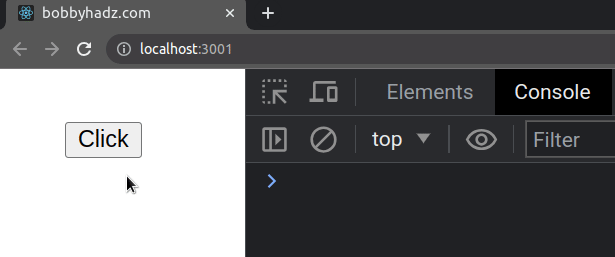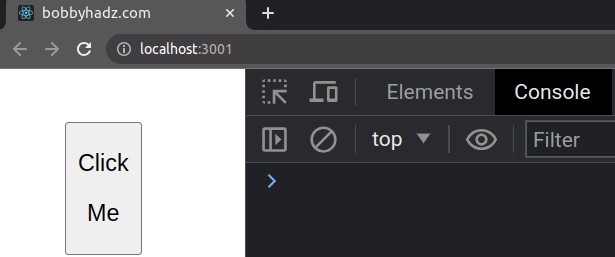Extend an HTML Element in a Component's props in React (TS)
Last updated: Feb 29, 2024
Reading time·2 min

# Extend an HTML Element in a Component's props in React (TS)
To extend an HTML Element in a component's props in React, extend the specific element type in the props interface of your component.
import React from 'react'; interface ButtonProps extends React.ButtonHTMLAttributes<HTMLButtonElement> { text: string; children?: React.ReactNode; // ... your custom props here } const Button: React.FunctionComponent<ButtonProps> = ({ text, ...rest }) => { return <button {...rest}>{text}</button>; }; const App = () => { return ( <div> <Button onClick={() => console.log('button clicked')} text="Click" /> </div> ); }; export default App;

We used the React.ButtonHTMLAttributes type to extend a button element in the
component's props.
The Button component can be passed any button-specific props in the example.
If you need a more broad type, you can use the HTMLAttributes type instead.
Other commonly used types to extend from are InputHTMLAttributes,
TextareaHTMLAttributes, LabelHTMLAttributes, SelectHTMLAttributes,
AnchorHTMLAttributes, CanvasHTMLAttributes, FormHTMLAttributes,
ImgHTMLAttributes, etc.
Notice that we passed the HTMLButtonElement type to the ButtonHTMLAttributes
generic in the example.
You might be extending an element of a different type.
HTML***Element. Once you start typing HTML.., your IDE should be able to help you with autocomplete.Some commonly used types are: HTMLInputElement, HTMLButtonElement,
HTMLAnchorElement, HTMLImageElement, HTMLTextAreaElement,
HTMLSelectElement, etc.
# Passing a children prop to the component
If you need to pass a children prop to the component that extends the HTML
element, make sure to type the children prop as React.ReactNode.
import React from 'react'; interface ButtonProps extends React.ButtonHTMLAttributes<HTMLButtonElement> { children?: React.ReactNode; // ... your custom props here } const Button: React.FunctionComponent<ButtonProps> = ({ children, ...rest }) => { return <button {...rest}>{children}</button>; }; const App = () => { return ( <div> <Button onClick={() => console.log('button clicked')}> <p>Click</p> <p>Me</p> </Button> </div> ); }; export default App;

We typed the children prop of the Button component as React.ReactNode, so
the component can be passed any button-specific props and a children prop.
You can define all of your custom props in the ButtonProps
interface.
I've also written a detailed guide on how to use create-react-app with TypeScript.

